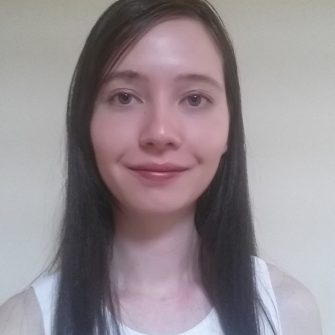
Melinda Mortimer
Honours Student
Melinda Mortimer recently finished her Honours year in Statistics under the supervision of Dr Pierre Lafaye de Micheaux.
She discusses her fascinating research, which has applications to neuroscience, what led her to study mathematics and statistics, the highlights of her studies and her next move.
Interview conducted by Susannah Waters
You recently finished Honours, under the supervision of Dr Pierre Lafaye de Micheaux. What factored into your decision to take up an Honours year?
Towards the end of my undergraduate degree (B Science in Mathematics and Statistics) I felt that I was enjoying studying maths and wanted to learn more. The Honours year was a good opportunity to take some additional courses, specialise in statistics and try my hand at academic research. I knew it would be a challenge, but the writing and time management skills you learn really sets it apart from the undergraduate degree.
Dr Lafaye de Micheaux reports that you undertook some very interesting work to build a statistical model based on Deep Learning, which can detect - with very high accuracy - small vessel diseases in the brain of elderly. This sounds fascinating! Can you elaborate on your research, and what led you to explore this particular area?
My research involved detecting and identifying a particular form of stroke in MRI scans. Normally these strokes are found by searching through the images by eye, however this can take a long time as the scans are very large. My research automates this process using deep learning methods. In particular I used convolutional neural networks – a common method for image recognition problems.
I chose this problem as there has been a lot of buzz around machine learning recently, so I wanted to take some time and learn skills from that domain. I also knew that I wanted to work on something that was potentially meaningful or impactful. After talking with Pierre, I found that he had been working on projects in collaboration with the neuroscience department, and I thought that it was a good fit.
Do you see the potential for this research to be applied to real-life medical situations in the near future?
Absolutely. There have already been some interesting applications of machine learning to other medical diagnoses, like cancer and bone fractures. I think there is still a long way to go in terms of model reliability and reasoning, but current results are looking promising.
In terms of my own model, the results are showing a high accuracy but still need some work before it can be used in practice. I am hoping that it will eventually be used to speed up data processing for neuroscientists here at UNSW.
You started out studying a maths teaching degree. What led you to switch over to studying mathematics and statistics only?
When I was finishing high school, I had an interest in maths but like many others, the only related career I knew of was maths teaching. After two years of the degree, I realised that I enjoyed the maths courses that I’d been taking and wanted to take it further. Teaching is still a passion of mine and it’s possible I’ll return to it at some point. For now though, I’m looking forward to seeing where maths and stats can take me.
What has been the most challenging thing about the Honours year?
The trickiest thing I found was time management. It is very difficult to juggle project work with coursework, especially when something unexpected happens. There is a very limited amount of time to do everything and it is very easy to attempt to do too much. The best advice I can give is to be realistic, list your priorities, and don’t be afraid to ask your supervisor or lecturers for help.
What has been your biggest highlight during your studies?
The greatest highlight for me was the Honours community. Knowing other students in the same situation was extremely valuable. It was great to be able to collaborate and give each other tips for thesis writing and presentations, and to have a supportive social circle.
Now that your Honours year is done and dusted, what are your plans for your next move?
I’ve been able to secure a position at an ASX 100 company to start in 2019, after some well-needed travel. Despite working full-time, I hope that I can continue learning and following my passion for mathematics and statistics.
----------------------
December 2018
